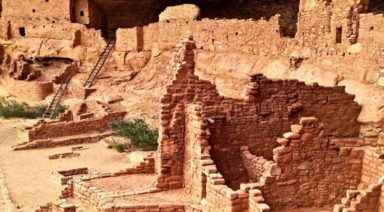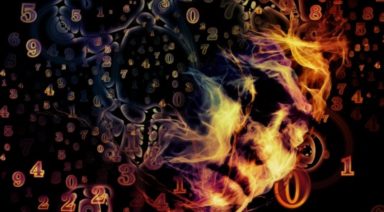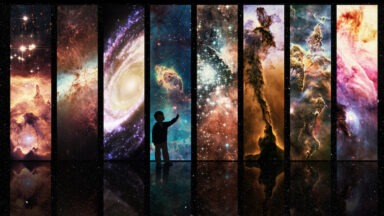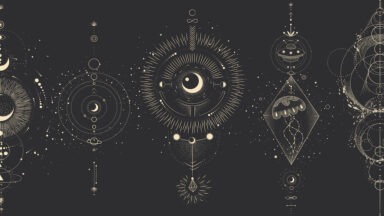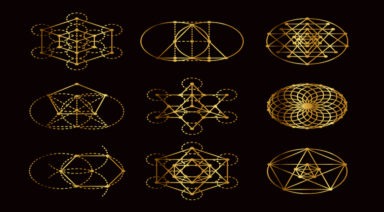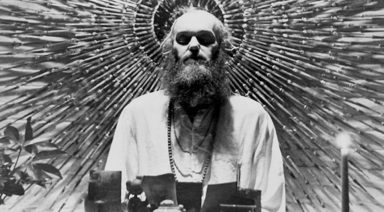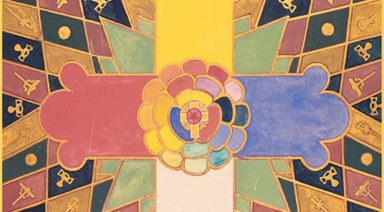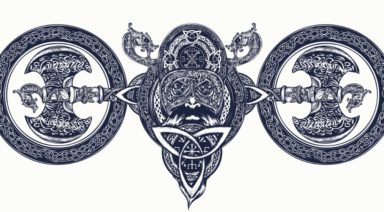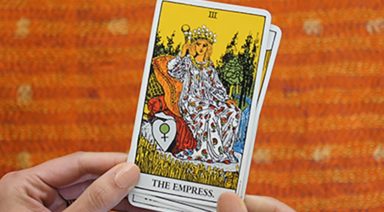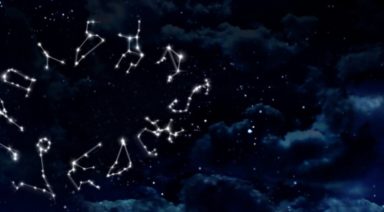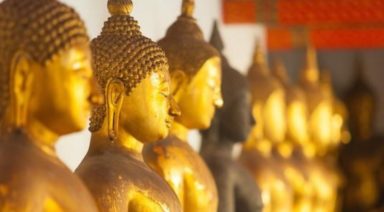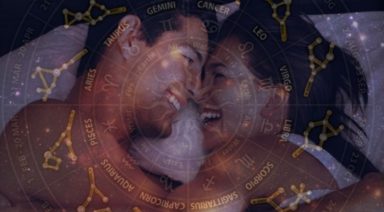What is Gnosticism?

Whether or not you know it, you’ve probably been influenced by the beliefs of the Gnostics and their powerful grasp over aspects of Western spirituality. Many schools of metaphysics, the occult, mystical teachings, and even fraternal organizations and secret societies have borrowed heavily from Gnostic teaching. It’s impossible to do justice to Gnosticism in a single article, but I’ll do my best to introduce you to some of the basic concepts, leaving further research to those spurred on by the mysteries inherent in the Gnostic world. Any personal work done, if seriously approached, must serve to improve the understanding and knowledge of the student.
A History of Gnosticism
The history of Gnosticism is well documented and was enriched by the discovery of the Nag Hammadi Texts, sometimes known as The Gnostic Gospels, in Egypt in 1945. These Christian documents, from the 3rd Century BCE, include apocryphal books of the Bible and alternative views of early Christian doctrine, some of them seemingly blasphemous and heretical to modern followers of monotheistic religions.
The Goddess in the Creation of the World
There are several unique aspects to the Gnostic system, many of them carried through into modern metaphysical doctrines, specifically many of the occult concepts dealing with The Goddess in the creation of the world, some of these being implicitly presented to the public in the guise of ritual, magical practices, and even Tarot cards. Aleister Crowley, the controversial but brilliant occultist, embraced certain aspects of Gnosticism and incorporated them liberally into his Thoth Tarot deck, even creating The Gnostic Mass, his spin on religious-magical ritual.
Alchemy
The Gnostic tradition has also been a powerful influence in the traditions of Alchemy. Although there were hundreds of different alchemical schools, almost all of them had ideas that were influenced by Gnosticism. Through alchemical allegory, the search to purify the human soul was exemplified in clever emblems, designed to cause the observer to question the very nature of existence itself and to strive for a deeper understanding, searching for the “gold” that is the essence of everything that exists. This is a delightfully complex subject all in itself.
Jungian Psychology
Modern culture has been influenced by Gnosticism. Carl Jung’s, “The Red Book,” has been studied and embraced by Gnostic students. It is a wealth of information regarding the search within the physical for spiritual freedom, and through that, the realization of the true essence of God. Carlos Santana’s album, Abraxas, was the name given to an image revered by certain Gnostic schools, a being with a rooster’s head, a human’s torso and serpents for legs. These symbols, although seemingly bizarre, or disturbing, actually hold great meaning for those who are willing to contemplate them and allow the inner voice to guide them on the pathway to knowledge. Think it over and you’ll see what I mean.
Let’s look at some Gnostic essentials. Please remember, this is by no means in depth and not everyone will agree with my views.
What Does Gnostic Mean?
The word Gnostic simply means one who knows. Compare it to the word agnostic, meaning one who doesn’t know, usually as applied to a belief, or understanding, to the nature of God. Whereas the agnostic is not an atheist, she/he usually has no concrete idea about the existence or non existence of God. The Gnostic knows certain things, although that knowledge may not necessarily bring answers nor clarity. This may seem contradictory, but I can assure you it isn’t.
There is no one school of Gnosticism. It may be more correct to call the whole subject, Gnosis. It is a general term for an entire field of religious searching and belief, one that allows for great latitude in personal understanding, and often doesn’t adhere to any one sacred book of light.
What Does Gnosticism Seek?
Oversimplifying the answer, Gnosis seeks to reveal the truth of the supreme essence of the divine, thus overthrowing false beliefs of God, society and life in general. It seeks, through a long and arduous journey of self evaluation and constant introspection, to remove the veil of darkness and reintroduce that divine spark of light to the individual, thereby allowing the reconnection to deity in the Pleroma.
The Pleroma
This word refers to what some might call heaven, but that concept falls short of what this truly represents. The main matrix of Gnosticism includes the idea of an absolutely pure concept of God. This way of looking at deity presents the idea of a singularity, The Monad. God is basically unaware of itself and is pure bliss. Anything united with that singularity is part of it, but there are aspects of it that can congeal and develop their own thoughts and agenda. The Pleroma is pure being and ultimately is beyond most thoughts of a creator god. Our version of a creator was a circumstance of Sophia.
Sophia
Sophia means wisdom. Originally a part of the Pleroma, Sophia, a feminine aspect of the divine, became curious about the nature of existence and if there was more to the universe, or so the story goes. Through her investigations, eventually there came into being, through her, the Demiurge. Some consider Sophia to be a great hero; others are not so kind.
The Demiurge
The Demiurge is probably one of the most controversial of all aspects of Gnosticism. The word Demiurge means common worker, and implies that he was not beyond making a mistake or two. (Some have said that Demiurge means half effort. I don’t agree.) In fact, when it comes to looking at the woes of our world, the Demiurge gets all the credit.
When Bad Things Happen to Good People
Have you ever asked yourself why good people suffer and villains thrive, survive and ruin things for the rest of us? Have you ever wondered how children become ill, why they die of terrible diseases or suffer at the hands of abuse? Why do tsunamis wipe out entire populations? Why is there savagery in nature, and more importantly, why does it exist in humanity? Why do we become ill? Why do we eventually die? Why can life be so incredibly difficult, yet so wonderful at the same time? The Demiurge, that’s why.
The Fool
Aleister Crowley portrayed the Demiurge as The Fool in his Tarot. Within his grasp are all the elements for the creation of anything and everything that exists, and yet he is empty of thought and without any true plan. His is a mishmash of creative fury. It’s almost as if he blunders his way through the creative process, leaving us to be stuck with the miserable consequences of his creations.
A Spark of Divinity
The idea that we live in a world created by a flawed creator naturally brings to mind the thought that life is, or can be, miserable. In fact, this was one of the basic views of many of the Gnostic groups. In their eyes, life is misery and is the real hell. Everything is an illusion and nothing more than a trapping, designed to keep us from realizing the immense lie that we play a part of. This negative view of life, as a form of bondage of the soul, isn’t very uplifting, but to the right devotee, it can be a wonderful opportunity to bring home the idea of turning inward, making the most of this existence and finding that spark of divinity within us that allows us to transcend simple physical being and move into the realm of the spiritual.
For the Open Minded
The Demiurge is often linked to our concept of a creator God. In other words, the very deity worshiped all over the world every day and considered to be the supreme God in many religions, is viewed by the Gnostics to be the creator of all misery and the father of trouble. It’s easy to see why it takes a certain type of person to take on Gnosticism, one with an ability to be open minded and un-phased by dogma, culture or fear. Through the ability to investigate and accept, comes a certain freedom.
The Three Types of Individuals
In Gnosticism, there are three levels of personal existence.
Hylic
The first is the Hylic and is the most physically bound, being trapped in desire, a need for love, possessions, and physicality.
Psychic
The second of these is known as the Psychic, and relates to those who are mentally based, concerned with those realms that although not seen, can certainly be conceived of and felt, but are also partially spiritualized.
Pneumatic
The third type is the Pneumatic, the spiritual individual who connects to higher levels of consciousness, thereby giving the opportunity, through inner searching and meditation, the ability to again unite with the real God rather than the illusions held by most. This is the desired spiritual level of attainment for humans. Through understanding, through gnosis, they become essentially incorruptible and are immune to the perversions and misery of the world.
Although it is possible to move from one spiritual level to another, there is nothing easy about it. In part, this was the great aim of spiritual alchemy and the reason for the immense secrecy involved in its symbols and teachings.
Alchemy
Spiritual alchemy has been a fascination in the metaphysical and occult world for hundreds of years.
As Above, So Below
The basic axiom, “as above, so below,” lends itself to the idea that whatever happens at any level of the universe must also take place within the individual. This becomes the concept of the macrocosm and the microcosm. As certain sets of rules apply to everything that occurs, it follows that if we view nature and science, we should be able to get a good idea as to what is happening inside us.
Alchemical Gold
The search for alchemical gold, or the philosopher’s stone, is a common theme throughout occult lore. The idea of gold being the perfect metal, in that it never tarnishes, links it to the sun, the giver of life on this planet.
It was presumed that within each and every one of us there is a divine spark, that connection to the Monad, God, that once seen, is freed and allowed to transform us, essentially changing us completely and influencing the world.
It was also assumed that all metals started out as gold, but due to their surroundings, became corrupted and devolved into other minerals. For example, in an area that was filled with angry, violent energy, the gold might become iron. In another area, it might become lead, tin, or copper. Through the use of base corrosives and acids designed to break down the constituent parts of the minerals, and through a specific set of carefully defined processes, the lesser aspects of the minerals would eventually be shed and the gold within released. So it must be with us.
Inner Gold
If we spend time evaluating, meditating and working on ourselves in a constant effort to release the dross from our spirit, mind, and body, the inner gold of divinity will also be released. The aim was to improve ourselves and free us from pettiness, illness, misery, greed and even death.
Archons
Archon means ruler, and under the main Archon, the Demiurge, was a legion of lesser rulers. Some might consider them to be the gods of the ancient world. Some have linked them to angelic forces, however this is not necessarily a flattering light to be illuminated by. Like their fellow Archon, the Demiurge, they are well removed from the original energy of the divine and thus prone to flaws, causing misery.
In Deep Thought
Far from being a depressing philosophy, Gnosticism is a discipline of deep thought, realistic observation of the world, and ultimate hope. At least, that’s my point of view. Some might think Gnosis to be a cynic’s delight, others simply a frank depiction of life. I urge you to do your own research and make your own decisions. You certainly don’t have to embrace, nor believe in it, but you might find that parts of it resonate in a way that you don’t expect, and will certainly make you think.
Until next time, I wish you all peace and love.
How to Hold a Smudging Ceremony

A smudging ceremony is the ritual of burning plant resins and herbs in a shell or a clay bowl while intentions and prayers are called forth. For centuries, Native Americanand Indigenous cultures have practiced smudging rituals to clear away negative energy, to invite in peace and harmony for individuals or environments. The smoke from the herbs and the plant resins are fanned using a feather or a hand and directed like a “cleansing smoke bath” surrounding the person or the space.
The purpose of this cleansing ritual is to clear away anxieties, sadness, impurities, dark thoughts or unwanted energies that may have attached themselves to a space or an individual.
Smudging is most often performed before or as part of a ceremony to clear the environment and the people from certain thoughts or feelings that will not serve the highest good in themselves. For this reason, it is important to set a clear intention while smudging.
As the smudging ceremony is practiced, the smoke rises and so do the prayers to mother earth, father sky, to the sun and the moon, to the plants, the animals and the water. The burning of the sacred plants- sage, cedar, sweetgrass and palo santo- to name a few, support the connection to the sacred realms between the earth and spirit. Through this connect to spirit the smoke bath lifts negative feelings and energy and creates an opening for prayers and intentions to be heard, therefore bringing positive intention into practice.






